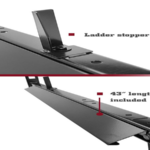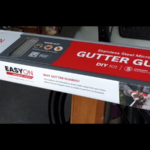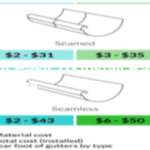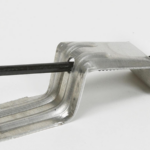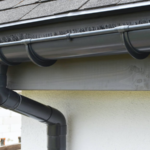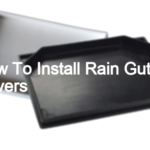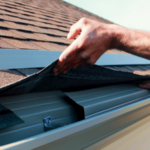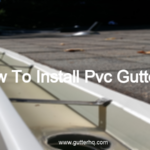- Measure the length of your eaves and cut the PVC rain gutter sections to size.
- Attach the rain gutter hangers to the eaves, making sure they are spaced evenly.
- Snap the PVC rain gutter sections into the hangers.
- Attach the downspouts to the rain gutters, using the brackets that come with them.
- Test the system by pouring a bucket of water into the rain gutters. Make sure the water drains properly and doesn’t leak from any of the joints.
How do you install PVC gutters?
PVC gutters are a type of gutter system that is made from PVC, or polyvinyl chloride. PVC gutters are a popular choice for many homeowners because they are durable, low maintenance, and easy to install. PVC gutters are available in a variety of colors, so you can find a color that matches your home’s exterior.
To install PVC gutters, you will need to purchase the proper materials and tools. PVC gutters are available in kit form, which includes all of the necessary components and instructions. You will also need to purchase some basic hand tools, such as a screwdriver, drill, level, tape measure, and ladder.
Once you have all of the necessary materials, you can begin the installation process. The first step is to mark the location of the gutters on the exterior of your home. You will then need to drill pilot holes into the fascia board, which is the board that the gutters will be mounted to. Next, you will need to attach the gutter hangers to the fascia board using screws.
After the hangers are in place, you can begin to install the PVC gutters. Start at one end of the gutter and work your way towards the other end. Use the screws that came with the kit to attach the gutters to the hangers. Be sure to use sealant around the screws to prevent leaks.
What screws to use for plastic gutters?
The most common type of screw to use for plastic gutters is a hex-head screw. These screws are easy to find at most hardware stores and come in a variety of sizes. The size of screw you’ll need will depend on the thickness of the gutter material.
For thin-walled gutters, a #8 or #10 screw will suffice. For thicker gutters, you’ll need a #12 or #14 screw. If you’re not sure which size to get, it’s always better to err on the side of a larger screw. It’s much easier to drive a larger screw into a smaller hole than it is to drive a smaller screw into a larger hole.
When choosing screws, make sure to get ones that are made of galvanized steel. This will help to prevent rust and corrosion.
How do you use PVC pipe as gutter?
PVC pipe is a popular material for gutters because it is durable and easy to work with. You can cut PVC pipe with a saw or a power drill, and it can be glued together with PVC cement.
To use PVC pipe as a gutter, you will need to cut it to the desired length and then attach it to the edge of the roof with brackets. The brackets should be spaced about 2 feet apart. You can then attach a downspout to the end of the gutter to direct the water away from the house.
PVC pipe is an affordable and easy-to-use option for gutters. With a little bit of planning and some basic tools, you can install PVC gutters on your own.
How many hangers for vinyl gutters?
In most cases, you will need one hanger for every foot of vinyl gutter. Most hangers are made to hold about 10 pounds, so if you have a particularly long or heavy gutter, you may need more than one hanger. It’s always better to err on the side of caution, so if you’re not sure, it’s best to consult with a professional before making your purchase.
Do you nail or screw gutters?
It is typically recommended that you use nails to attach gutters, as this will provide a more secure hold. However, if you are using screws, make sure to use a type that is designed for use with gutters, as regular screws may not provide a strong enough grip.
Do gutters go over or under drip edge?
There are two schools of thought when it comes to the installation of gutters and drip edge. The first is that the gutters should be installed under the drip edge in order to provide the most protection for the home. The second school of thought is that the gutters should be installed over the drip edge in order to provide a more finished look.
How do you seal PVC gutter joints?
- To seal PVC gutter joints, you will need to use a PVC sealant.
- First, apply the sealant to the inside of the gutter joint.
- Next, use a putty knife or another tool to smooth out the sealant.
- Finally, allow the sealant to dry completely before using the gutter.
Final Word
PVC rain gutters are a great way to protect your home from water damage. They are easy to install and are very durable.

